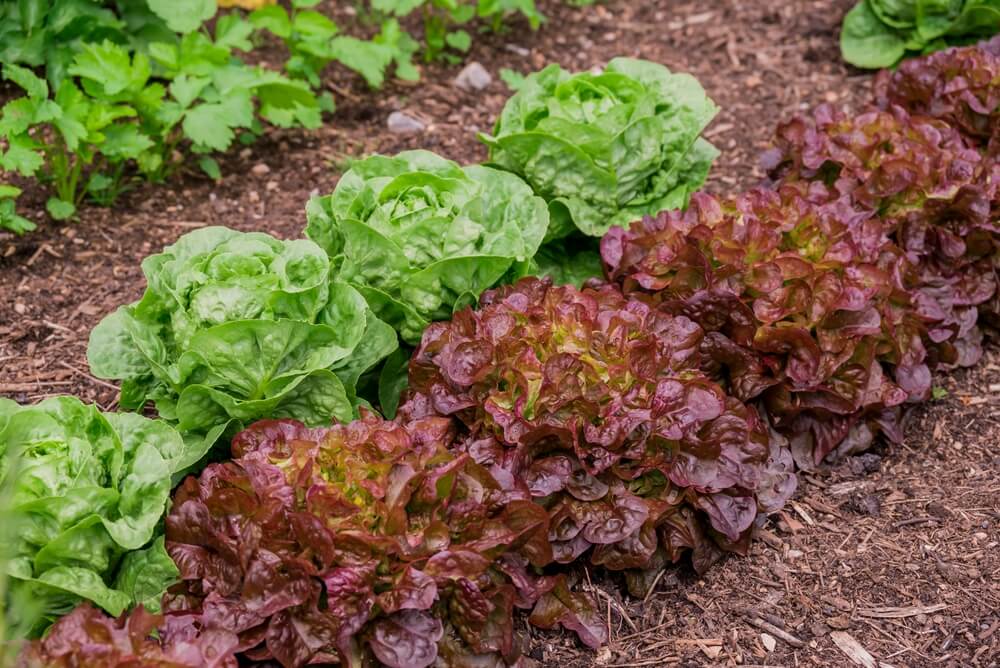How To Grow Delicious Lettuce From Seed To Harvest For Epic Homemade Salads!
Welcome! This article contains affiliate links, meaning I get a commission if you decide to make a purchase through my links, at no extra cost to you.
Learning how to grow lettuce from seed is one of gardening’s most excellent confidence boosters. The best part is that these fast-growing salad crops practically leap out of the ground to reward your efforts. Whether you’re dreaming of colorful salad bowls or want to skip those expensive organic lettuce prices, growing your own from seed opens up a world of varieties you’ll never find in stores.

Sound enticing?
Then let’s grow some delicious homemade salad, from seed!
How To Easily Grow Lettuce From Seed
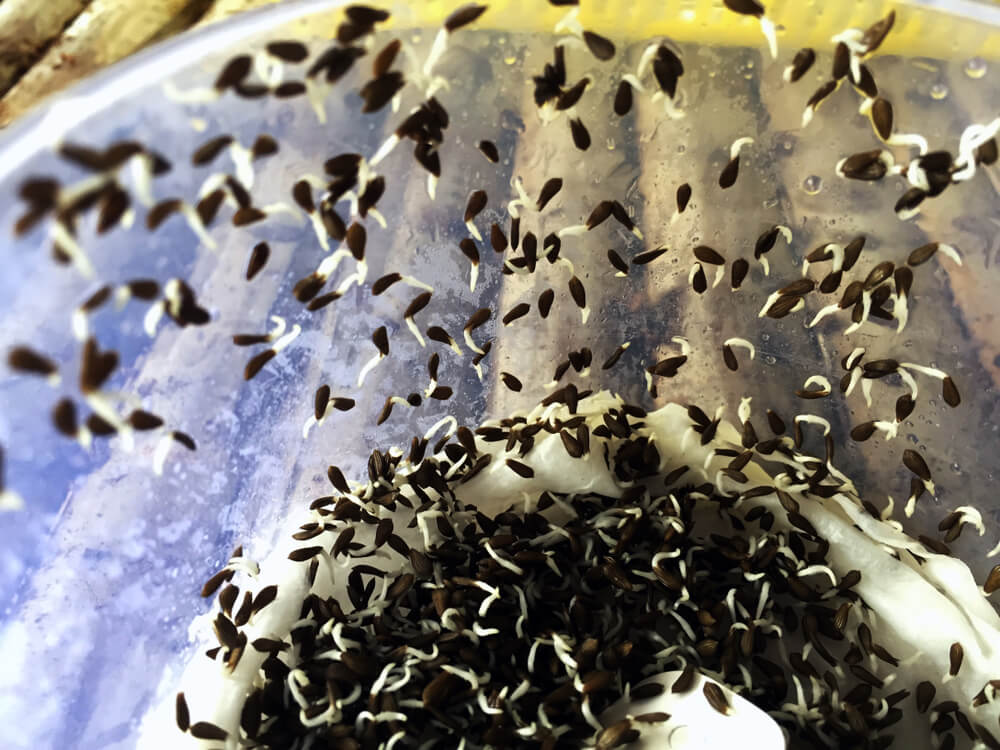
You can plant lettuce seeds nearly anywhere you want – including indoors in pots. But we recommend direct sowing outdoors in most cases. Here’s how.
Step 1 – Pick Your Spot (And Timing)
Choose a location where your lettuce seeds will get plenty of morning sun but also some afternoon shade. Lettuce loves cool conditions and will bolt (go to seed) faster than you can say “Caesar salad” in blazing heat.
Plant your lettuce in early spring. You can also plant lettuce in late summer or early fall when temperatures range between 45°F and 75°F.
(Your lettuce seeds are tiny but mighty, and they’re not picky about perfect soil.)
Step 2 – Prep Your Soil (Keep It Simple)
Loosen the lettuce’s soil to a depth of about six inches and mix in some backyard compost, if available. Don’t overthink this – lettuce has shallow roots and isn’t demanding. The key to growing lettuce is good drainage because soggy seeds rot instead of sprouting.
Step 3 – Sow Like You Mean It
Sprinkle seeds directly on the soil surface, barely covering them with a whisper-thin layer of soil (about 1/8 inch). Think of it like seasoning a salad – you want even coverage but not a heavy hand. Space rows about 12 inches apart, or scatter them in a patch if you’re going for the “cut-and-come-again” approach.
Step 4 – Water Gently (No Pressure)
Keep your lettuce seeds’ soil consistently moist but not waterlogged. Use a gentle water bottle with a spray or misting setting – those tiny lettuce seeds can wash away surprisingly easily. In 7 to 14 days, you’ll see those first green cotyledons poking through like tiny green flags of victory.
Step 5 – Thin Seedlings And Enjoy
Patiently wait for your lettuce seedlings to have their first true leaves! Then, thin your lettuce seedlings to about 4 to 6 inches apart (eat the thinnings. They’re delicious!) In 45 to 60 days, you’ll be harvesting fresh lettuce that surpasses store-bought greens.
Read More – How To Grow Delicious Strawberries In Your Backyard From Seeds Or Runners!
Lettuce Growing Requirements
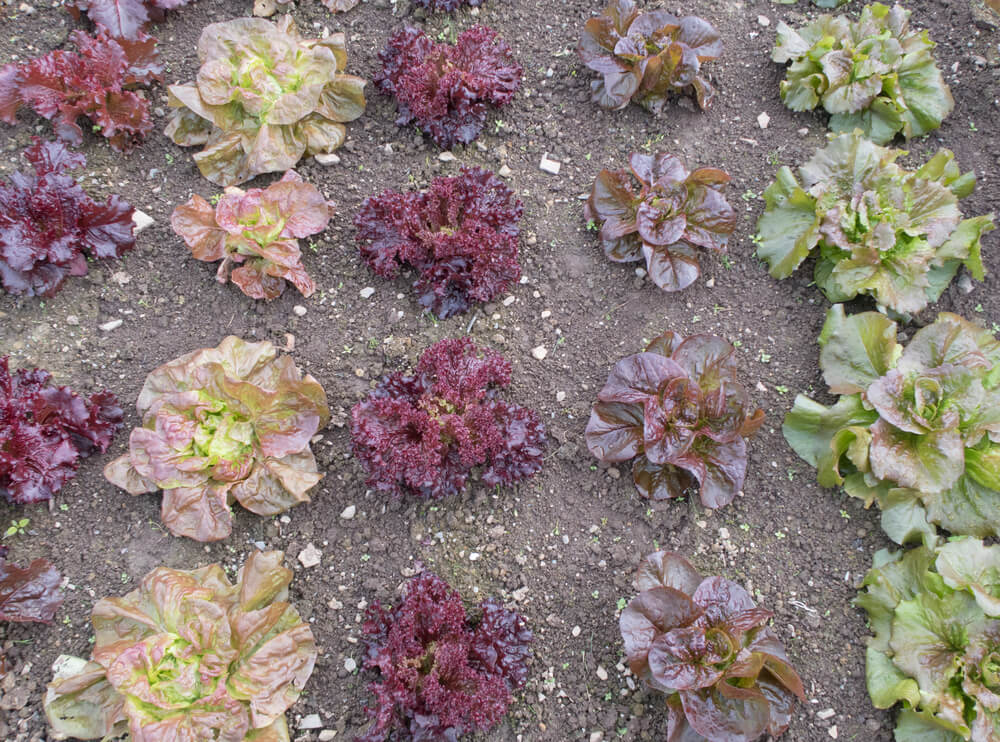
Here’s the good news. Lettuce is one of the least fussy garden crops to grow with minimal effort. It’s eager to please and surprisingly forgiving. And, even though it’s one of the easiest crops for beginners, it might turn slightly bitter in the hot weather! (More about that later.)
Sunlight
Morning sun, afternoon shade is the sweet spot. Full sun works well in cool weather, but your lettuce will appreciate some protection during hot afternoons. Offer your lettuce roughly 4 to 6 hours of direct sunlight.
Climate
Cool-season champion that thrives in 45 to 65°F weather. Plant in early spring, late summer, or early fall for best results. Mid-summer growing? Choose heat-tolerant varieties and provide shade cloth!
Soil + Fertilizer
Well-draining soil with decent organic matter makes lettuce happy. pH between 6.0 and 7.0 is ideal. Light feeder – a balanced fertilizer applied at planting and possibly once mid-season is sufficient.
Watering
Consistent moisture without soggy feet. About one inch per week, including rainfall. Try to keep your lettuce leaves dry! Water your lettuce plant at the soil level to prevent leaf diseases and keep those leaves crisp.
Harvesting
Cut the outer leaves when they’re 4 to 6 inches long, leaving the center intact to continue producing. Or harvest the whole head at once. Morning harvests give you the crispest leaves.
Read More – How To Grow Beautiful Bonsai Trees In Pots Or Containers!
Lettuce Planting And Growing Schedule
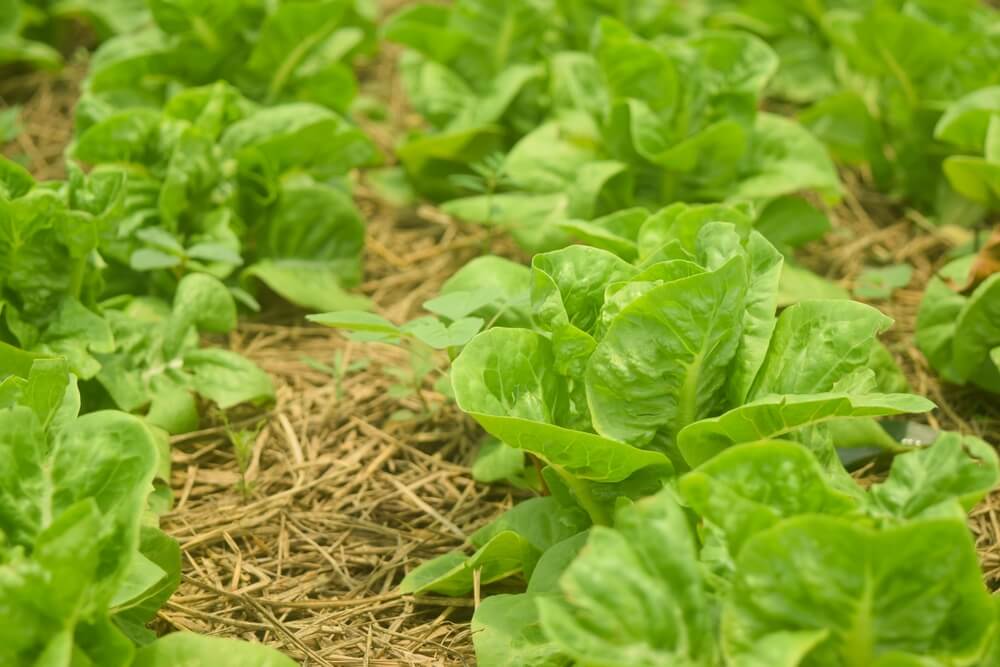
Here are the critical dates that all lettuce growers should be aware of.
April
Prime time for spring planting! Direct sow seeds as soon as you can work the spring soil. Cool nights and mild days create perfect growing conditions. Plant successive crops every two weeks for continuous harvests.
May
Last call for spring lettuce in most areas before the heat sets in. Focus on bolt-resistant varieties and provide afternoon shade. Your April-sown lettuce might begin producing in mid to late May! Keep harvesting the yummy plantings before they turn bitter.
June
Too hot for most lettuce varieties, but heat-tolerant types like Black-Seeded Simpson can withstand it with the help of shade cloth and extra water. Better to take a lettuce break and plan for fall.
July
Give lettuce a summer vacation in most climates. Use this time to prep beds for fall planting and order your favorite varieties. In cooler mountain areas, you might sneak in some heat-tolerant types.
August
Fall planting season begins! Start seeds indoors or direct sow your lettuce in late August for most regions. The returning cool weather will soothe your lettuce. Choose fast-maturing varieties for best results.
September
Peak fall planting month. Direct sow liberally since cool weather means less bolting stress. Your lettuce will grow more slowly but taste sweeter as temperatures drop. Plant new lettuce seeds in early September to harvest well into fall.
Read More – 23 Beautiful Pumpkin Cultivars For Autumn Decor And Delicious Home Recipes!
Choosing The Best Lettuce Varieties And Cultivars
We’ve never seen a lettuce cultivar that we didn’t love. But these six are our top picks.
Black-Seeded Simpson

This heirloom loose-leaf lettuce has been winning hearts since 1850, and for good reason. The crinkled, light green leaves are incredibly tender with a mild, sweet flavor that never turns bitter. It’s practically bolt-proof in hot weather and grows fast enough to keep your salad bowl full all season long.
- Leaf Color: Light green, crinkled leaves.
- Time Until Maturity: 45 to 50 days.
- USDA Growing Zones: 2 to 11 (cool season crop).
- Flavor Profile: Mild, sweet, tender with no bitterness.
Black-Seeded Simpson’s delicate, almost ethereal leaves practically melt in your mouth, making it the perfect foundation for light vinaigrettes. It also makes a delicious, elegant bed for delicate proteins, such as poached fish or soft cheeses.
Red Sails Lettuce
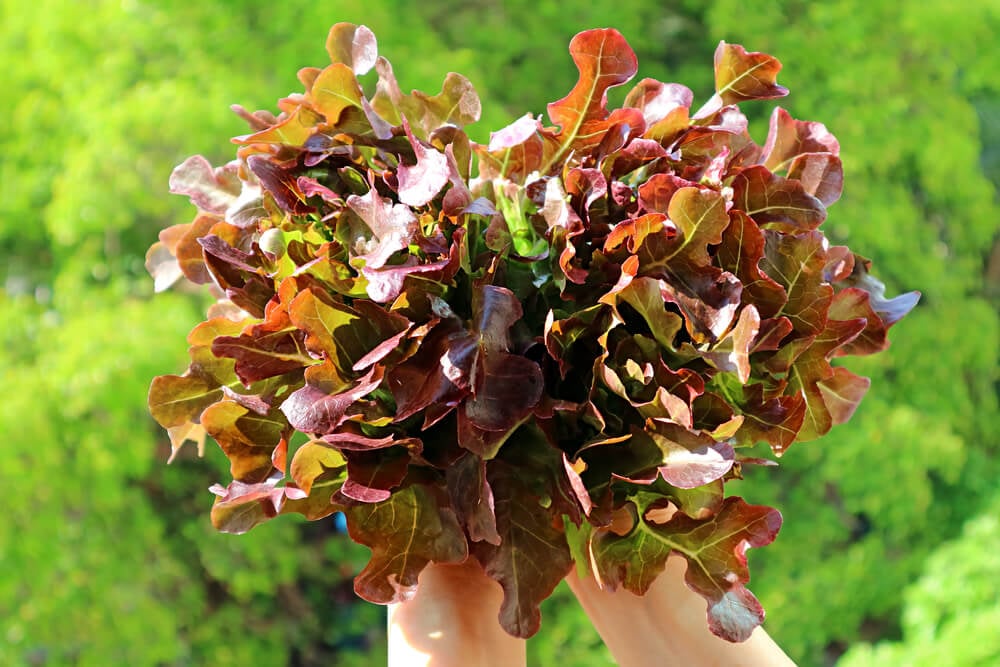
A stunning oak-leaf type that brings serious color to your garden and plate. The bronze-red edges deepen to burgundy in cool weather, creating leaves that resemble art more than vegetables. Heat-tolerant and slow to bolt, it’s both beautiful and practical. It’s the perfect overachiever.
- Leaf Color: Green with bronze-red edges, deepening to burgundy in cool weather.
- Time Until Maturity: 45 to 55 days.
- USDA Growing Zones: 2 to 11 (heat tolerant).
- Flavor Profile: Mild, slightly sweet with good crunch.
The stunning visual drama of Red Sails transforms any ordinary salad into a restaurant-worthy masterpiece. And its thick, sturdy leaves hold up beautifully to heartier dressings, such as creamy ranch or bold balsamic reductions.
Speckled Lettuce (Forellenschluss)
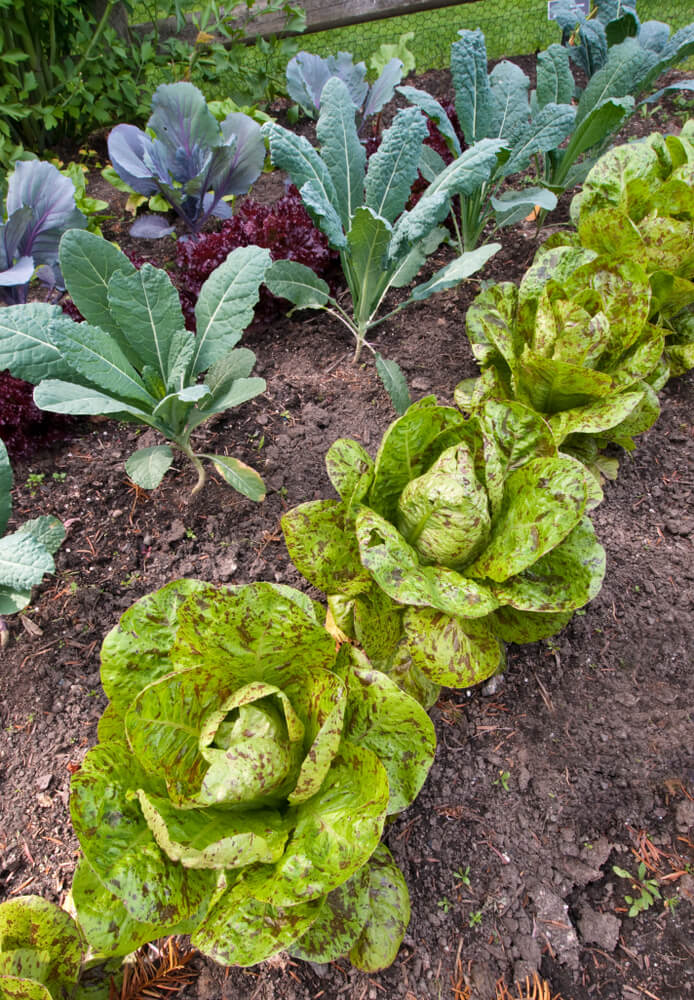
This Austrian heirloom (also known as Forellenschluss) looks like someone splattered it with red and green paint in the most appealing way! The speckled, romaine-type leaves have an incredible crunch and a savory, nutty flavor that goes beautifully with strong dressings. Cold-hardy and gorgeous. What more could you want?
- Leaf Color: Green with distinctive dark green speckles/spots.
- Time Until Maturity: 55 to 65 days.
- USDA Growing Zones: 3 to 9. (Cold-hardy).
- Flavor Profile: Nutty, crisp, romaine-like texture.
Forellenschluss brings an artistic look and is also delicious. It instantly upgrades Caesar salads or any dish where you want lettuce that won’t wilt under pressure.
Merveille des Quatre Saisons
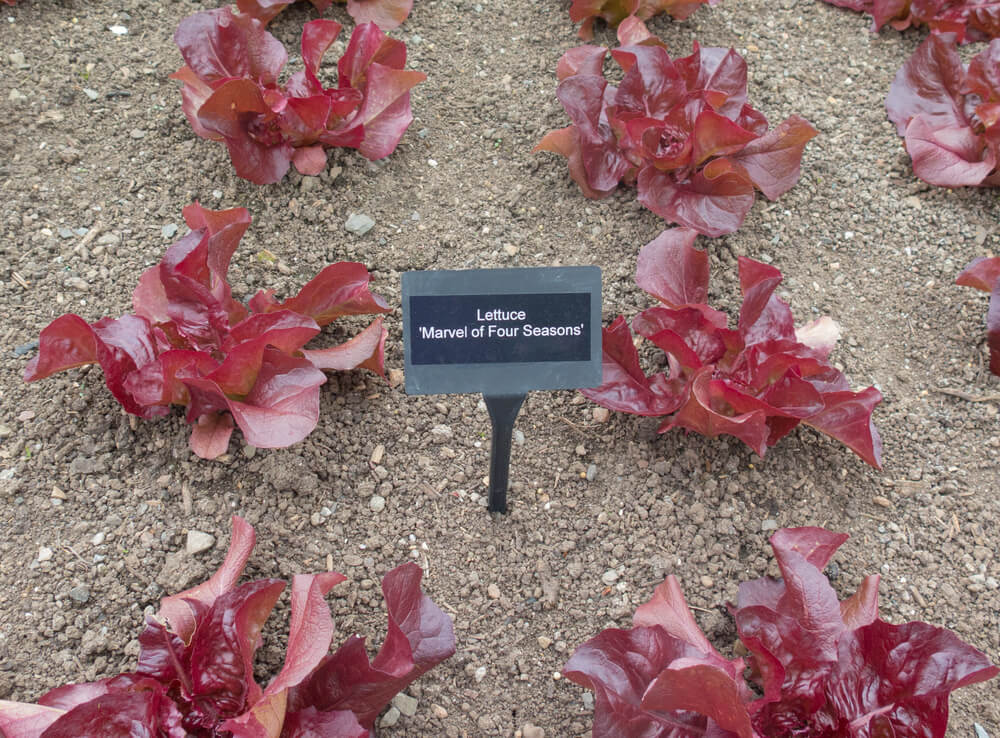
This French beauty translates to “Marvel of Four Seasons,” and it lives up to the name. The compact butterhead forms tight rosettes with green outer leaves and creamy yellow hearts. It’s incredibly cold-tolerant and can overwinter in mild climates, offering fresh greens when everything else has given up.
- Leaf Color: Green outer leaves with creamy yellow hearts.
- Time Until Maturity: 60 to 75 days.
- USDA Growing Zones: 3 to 10 (excellent cold tolerance).
- Flavor Profile: Buttery, mild, tender butterhead texture.
The luxurious, buttery hearts of Merveille des Quatre Saisons pair best with classic French bistro salads. It’s also perfect if complemented by good olive oil, a hint of Dijon, and perhaps some toasted walnuts.
Lollo Rossa
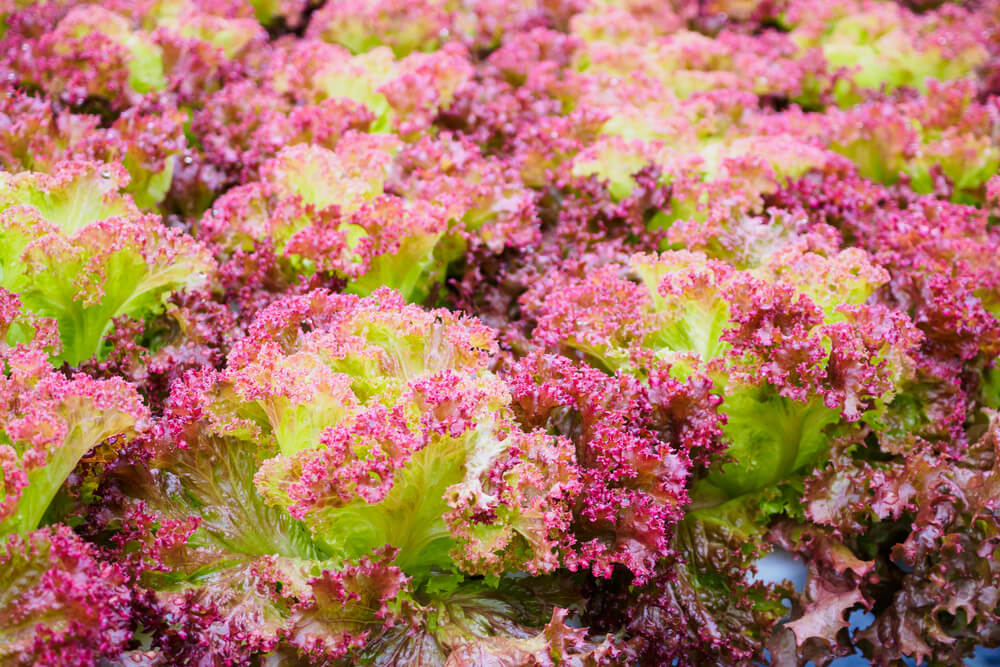
We can’t forget the punk rock lettuce of the garden world with its frilly, deeply lobed leaves in shades of green and burgundy. This Italian loose-leaf variety adds serious texture and mild flavor to salads. It’s heat-tolerant, slow to bolt, and so pretty you might not want to harvest it.
- Leaf Color: Green to burgundy with deeply frilled edges.
- Time Until Maturity: 50 to 60 days.
- USDA Growing Zones: 2 to 11 (heat tolerant).
- Flavor Profile: Mild, slightly bitter, excellent texture contrast.
Lollo Rossa’s dramatic frilly architecture creates incredible textural interest that elevates everything from rustic panzanella to elegant, fresh garden salads. Its elegant burgundy ruffles provide both flavor and visual punch!
Great Lakes Lettuce
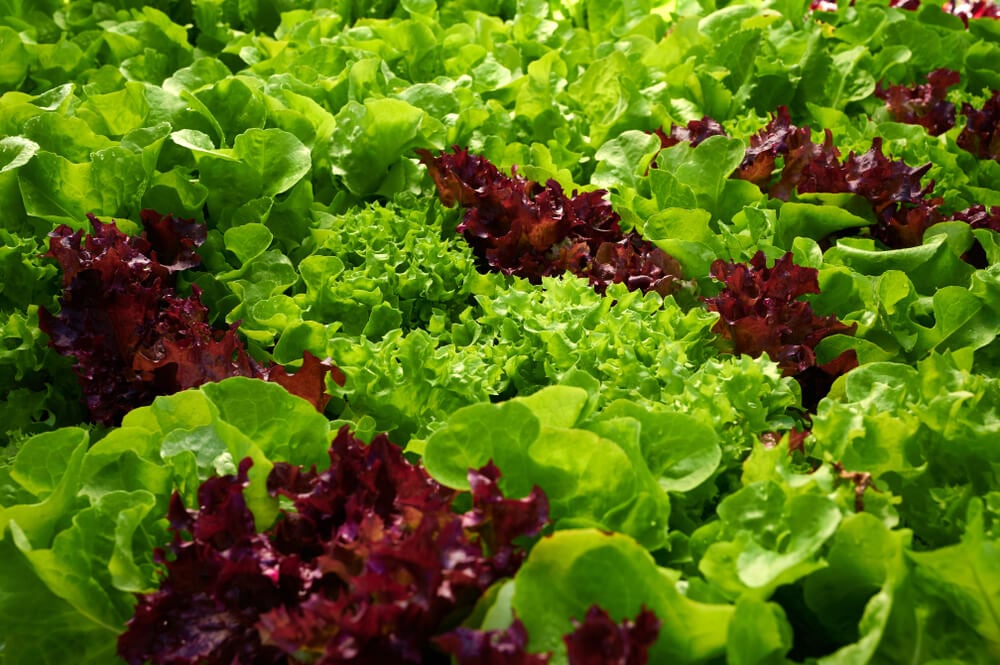
The classic American iceberg that delivers a satisfying crunch fit for a BLT or wedge salad. Great Lakes forms dense, compact heads with crisp, pale green leaves that stay fresh for weeks in the refrigerator. It takes longer to mature than loose-leaf varieties. However, the payoff is substantial, as these heads are super robust and withstand summer heat better than most head lettuces.
- Leaf Color: Pale to medium green, tight, compact heads.
- Time Until Maturity: 80 to 90 days.
- USDA Growing Zones: 2 to 11 (good heat tolerance for a head lettuce).
- Flavor Profile: Mild, crisp, classic iceberg crunch.
Great Lakes delivers that nostalgic, all-American crunch that makes it irreplaceable for classic wedge salads with blue cheese dressing. Add it anywhere you need lettuce sturdy enough to hold up to hearty toppings and bold flavors without losing its satisfying bite.
Read More – How To Grow Delicious Bush Or Pole Beans In Your Backyard Garden!
Common Lettuce Growing Problems (And How to Fix Them)

Growing lettuce is surprisingly easy. However, there are a few lingering issues to be aware of!
Watering Issues (Overwatering Or Underwatering)
Too much water creates soggy, rotting roots and invites fungal diseases that turn your lettuce into mush. Too little water stresses plants into bolting early or creates tough, bitter leaves. The sweet spot is consistent moisture, approximately 1 inch deep. Stick your finger in the lettuce’s soil to check. Water deeply but less frequently, and always water at soil level to keep leaves dry.
Bitter Lettuce
Nothing ruins a garden salad faster than lettuce that tastes like it has an attitude problem. Lettuce bitterness typically develops when plants experience excessive heat stress, inconsistent watering, or bolting (the process of going to seed). Plant heat-tolerant varieties, provide afternoon shade during warm weather, and harvest in the cool morning hours. Once lettuce starts bolting, it’s game over – pull it up and start fresh.
Pests
Slugs, aphids, and cutworms love tender lettuce leaves almost as much as you do. Slugs leave slimy trails and chewed holes – combat them with beer traps or copper strips. Aphids cluster on the lettuce leaf undersides. Blast the aphids with water or control them with the help of beneficial insects. Cutworms slice through seedling stems at soil level – protect young plants with cardboard collars around the base.
Bolting
Bolting is when your lettuce decides to ditch salad duty and shoot up a tall flower stalk instead – nature’s way of saying, “I’m making seeds now, thanks for playing.” While bolting is excellent for the lettuce’s future generations, it’s terrible for your dinner plate because the leaves turn bitter and harsh once the flower stalk appears.
Prevent this garden heartbreak by planting bolt-resistant varieties, providing afternoon shade during warm spells, keeping soil consistently moist, and timing your plantings for cool weather (spring and fall). Once you see that telltale central stalk reaching skyward, harvest immediately or pull the plant – there’s no going back from lettuce’s reproductive rampage!
Read More – Growing Epic Eggplants From Seed In Your Backyard Garden!
Conclusion
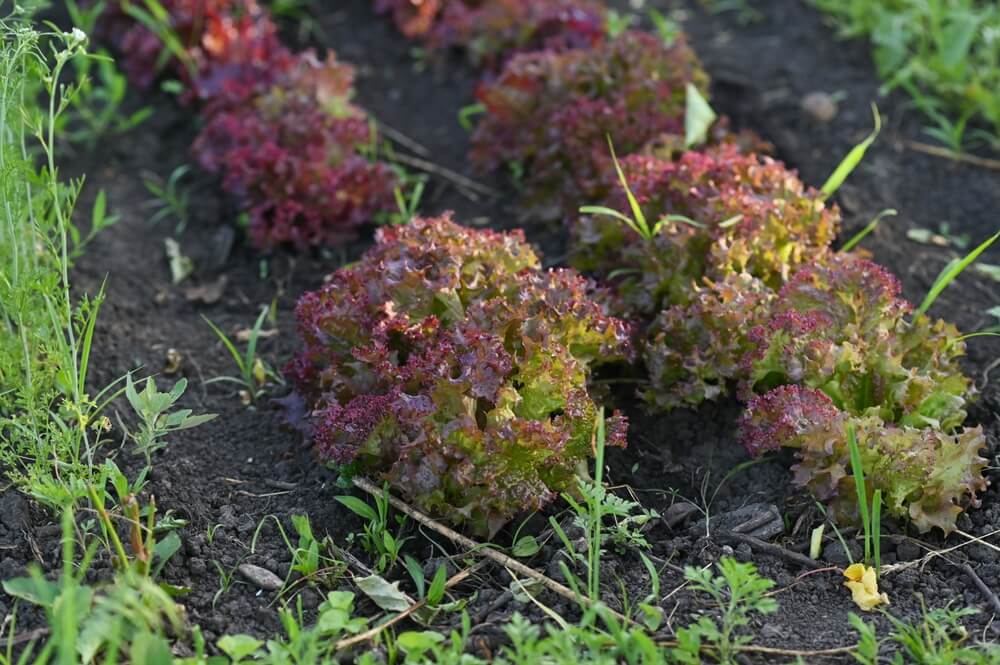
Now you’re armed with everything you need to become a lettuce-growing legend! Remember, every expert salad gardener started with a humble packet of lettuce seeds. Luckily, lettuce is wonderfully forgiving while you learn. So grab those salad seeds and sow a handful in your garden. Your future self (while enjoying some delicious homemade salad) will thank you!
What about you?
- Will you grow some yummy lettuce this year?
- What salad cultivar will you try first?
- Do you grow other salad crops with your lettuce? (Maybe turnips, onions, cucumbers, or tomatoes?)
Thanks for reading.
Have a great day!

